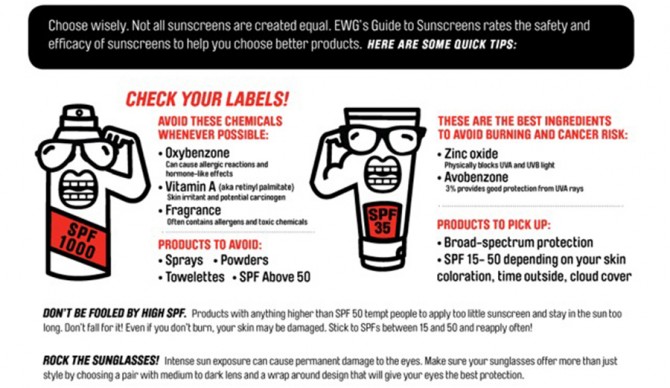Editor’s Note: This piece is the second of our three-part series about current debates in sunscreen. Check back for part three, exploring whether DIY sunscreen is efficacious or beneficial.

Great, now the Great Barrier Reef has herpes. Kinda. Photo: Duke University
If the current state of the environment has taught us anything, it’s that the choices made by humans have consequences both lasting and far-reaching. Almost every anthropomorphic decision, no matter how mundane or important in the moment, seems to impact either other people or the environment. For instance, when one wakes up he or she may make the decision to brew coffee with either a French Press (sustainable) or a Keurig, the pods of the latter (which are normally used daily) will end up in a landfill somewhere, destined to rot into eternity. However, if the French Press is chosen, what about the beans? Are you sure they are FairTrade? Do you know what FairTrade actually means?
It’s easy to get overwhelmed and feel paralyzed by the affects of our decisions. The key is to find a balance. To educate one’s self as much as possible and then act in accordance with the facts.
Right now, the facts say that chemical sunscreen, and its key ingredient: oxybenzone, may cause the death of coral reefs. *Oxybenzone is also the chemical which some claim can lead to hormone changes and cancer in users.

Photo: Non Toxic Revolution
A team from The Haereticus Environmental Laboratory in Virginia, which included the U.S. National Oceanic and Atmospheric Administration, the National Aquarium in Baltimore, the University of Hawaii, Tel Aviv University and Ben-Gurion University of Negev, Israel, took samples from reefs in Hawaii, the U.S. Virgin Islands and Eilat, Israel. The teams then analyzed the coral samples to determine what, if any, negative effects are due to oxybenzone.
The conclusion? “Oxybenzone poses a hazard to coral reef conservation, and threatens the resiliency of coral reefs to climate change.”
Time and NPR have also reported and corroborated on this finding.
Uh-ohhhh. Simply put, that is no bueno for members of the pro-chemical sunscreen camp.
It’s a harrowing fact for many who slather on chemical sunscreen from such popular brands as Neutrogena and then jump in the ocean. It seemed that the recent influx in the prevalence of “organic, natural” sunscreens was due to the fear that oxybenzone harms humans. This fact has been disputed and has failed to be proven sound. But, perhaps the environmental impacts of chemical sunscreen might be enough to force consumers to shell out a little extra cash if they plan to swim in the ocean post-sunscreen application.
This is a fact companies such as Manda sight as the reason for the creating organic, natural sunscreen. In fact one of the minds behind Manda, Cyrus Sutton, a recognized surfer, creator, and environmental activist wrote an article about why organic sunscreen is so important. In the article, Sutton notes, “…it’s been shown in scientific literature that corals have abnormal bleaching with sunblock that’s a dilution of just 10 micrometers. That’s one millionth of a liter.” As in most fields, Mr. Sutton has proved himself ahead of the trend.
The rabbit is out of the hat. The facts are in. If you plan to apply sunscreen and then enter the ocean, hopefully, you will choose organic. In one way or another, it’s killing the ocean we love.

